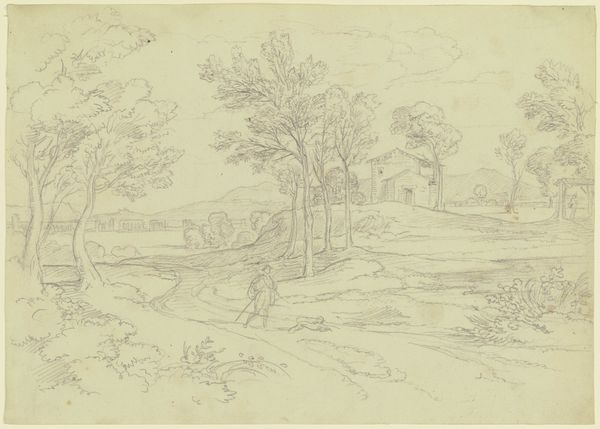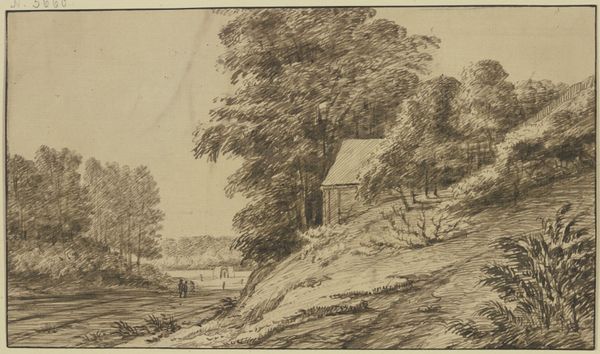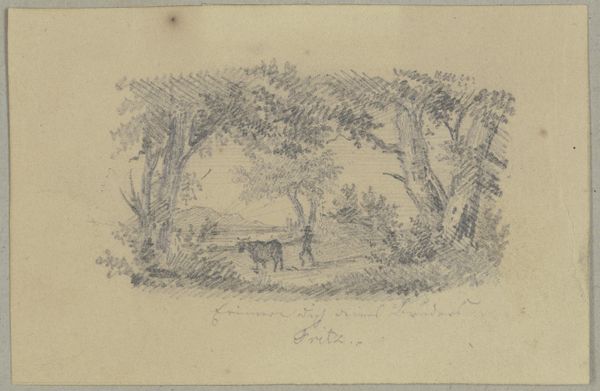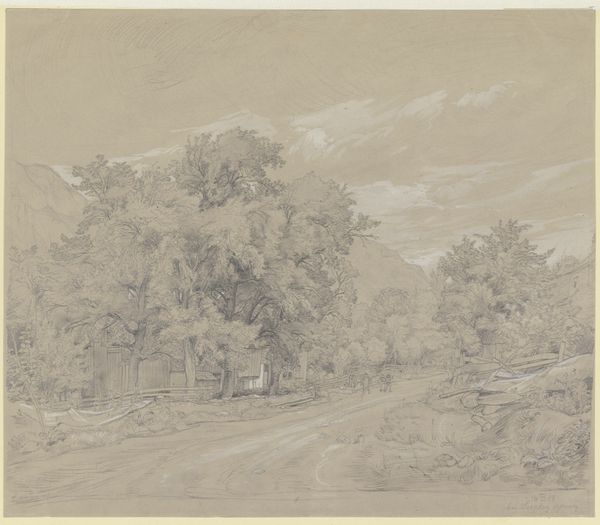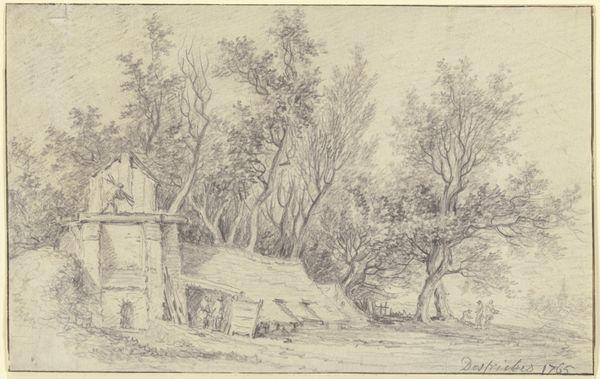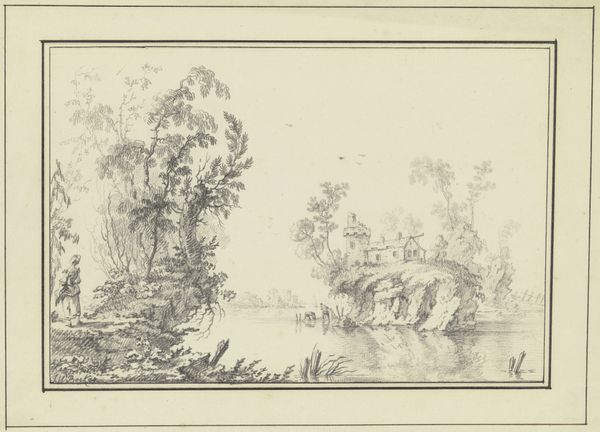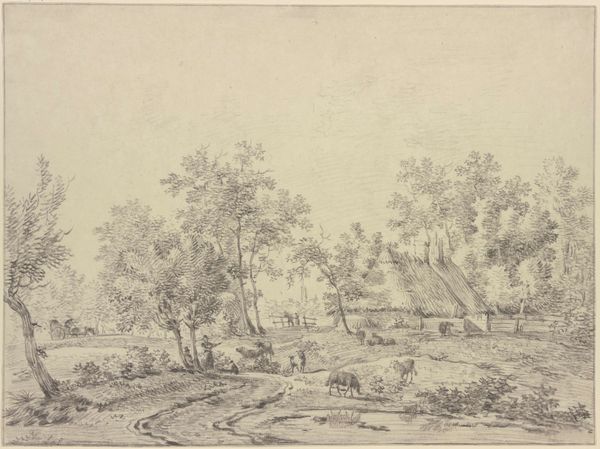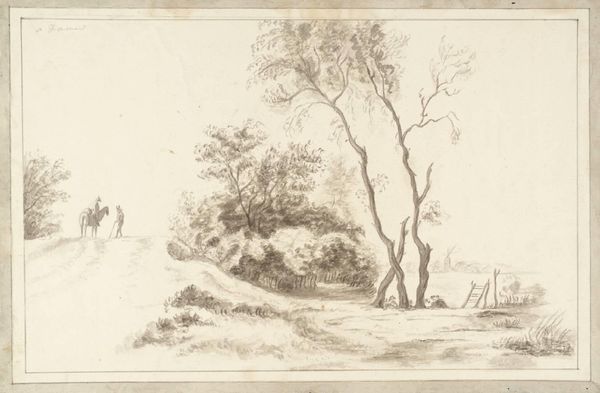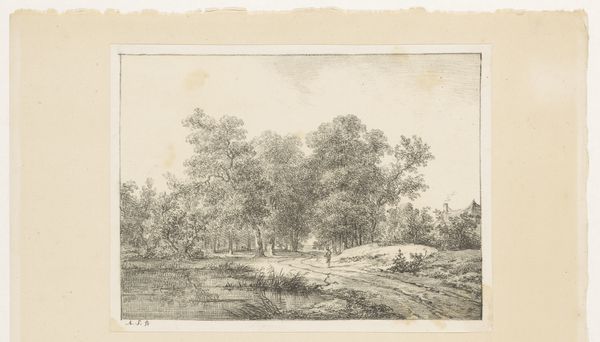
drawing, paper, ink, pencil
#
drawing
#
landscape
#
paper
#
ink
#
romanticism
#
pencil
Copyright: Public Domain
Heinrich Wüest made this drawing, Rheinfelden ohnweit Eglisau, sometime in the late 18th century. It depicts a humble dwelling nestled amid the Swiss countryside. At this time, the depiction of landscape was developing into a strong and independent genre across Europe. Drawings such as these record the details of specific places, but also suggest the feelings that those locations evoke. Consider the picturesque quality of this scene, and the way the artist has carefully arranged the natural forms into a pleasing composition. The image is not simply a record of a place but also a carefully constructed work of art. To understand this work better, we might explore the contemporary writings of art theorists, and the institutional settings in which landscape art was exhibited and collected. By such means, the apparently straightforward scene opens up onto a broader cultural landscape.
Comments
No comments
Be the first to comment and join the conversation on the ultimate creative platform.

